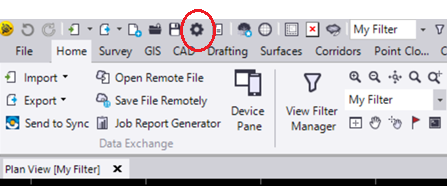

If you do not have a geoid model, a simple vertical shift as a single point can be applied, or and inclined plane can be computed using the orthometric heights of the local control.

The vertical adjustment can be done with or without a geoid model. The parameters resulting from this are a rotation, translation, and a scale of the GNSS coordinates. The horizontal adjustment is a least squares best fit to make the GNSS derived grid coordinates fit, as closely as possible, to the local control grid coordinates. A site calibration typically consists of a horizontal and a vertical adjustment. Essentially, a GNSS site calibration establishes the relationship between WGS84 latitude, longitude, and ellipsoidal height, with the needed local northing, easting, and elevation. This can be accomplished by working in a pre-defined coordinate system with known control, or by performing a GNSS site calibration. To benefit from the increased accuracy of modern RTK GNSS surveying, the WGS84 coordinates need to be translated into local grid coordinates. A GNSS receiver measures WGS84 latitude, longitude, and ellipsoidal height coordinates to determine its location, however, surveyors typically use a local grid coordinate system.

SITE CALIBRATION TRIMBLE SURVEY CONTROLLER SERIES
1.) What is a GNSS site calibration, and how does it work? A site calibration is a series of mathematical computations that transform WGS84 coordinates into local grid coordinates. Here we will address four of the more common questions to hopefully provide you some basic knowledge about what calibrations are and what they do. Every year we get a lot of questions about GNSS site calibrations. Spring is finally here and the 2013 surveying and construction season is about to take off.


 0 kommentar(er)
0 kommentar(er)
